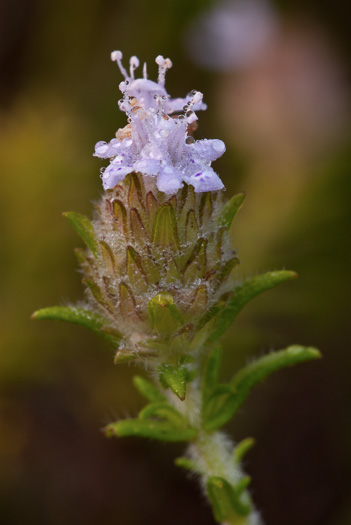Spermatophytes (seed plants): Angiosperms (flowering plants): Eudicots: Core Eudicots: Asterids: Lamiids: Lamiales
WEAKLEY'S FLORA OF THE SOUTHEASTERN US (4/24/22):
Piloblephis rigida
FAMILY
Lamiaceae
Go to FSUS key
Dig deeper at SERNEC, a consortium of southeastern herbaria.
SYNONYMOUS WITH
PLANTS NATIONAL DATABASE:
Piloblephis rigida
FAMILY
Lamiaceae
SYNONYMOUS WITH Floristic Synthesis of North America. BONAP (Kartesz, 2021)
Piloblephis rigida
SYNONYMOUS WITH Flora of the Bahama Archipelago (Correll & Correll, 1982)
Satureja rigida
SYNONYMOUS WITH Manual of the Southeastern Flora (Small, 1933, 1938)
Pycnothymus rigidus
COMMON NAME:
Florida Pennyroyal, Wild Pennyroyal
To see larger pictures, click or hover over the thumbnails.
Keith Bradley kab_p_rigida_09016
April Collier County FL
Big Cypress National Preserve
Small flowers are in compact, conelike spikes at branch tips, per Everglades Wildflowers (Hammer, 2002, 2015).
WEAKLEY'S FLORA OF THE SOUTHEASTERN US (4/24/22):
Piloblephis rigida
FAMILY
Lamiaceae
SYNONYMOUS WITH
PLANTS NATIONAL DATABASE:
Piloblephis rigida
FAMILY
Lamiaceae
SYNONYMOUS WITH
Floristic Synthesis of North America. BONAP (Kartesz, 2021)
Piloblephis rigida
SYNONYMOUS WITH
Flora of the Bahama Archipelago (Correll & Correll, 1982)
Satureja rigida
SYNONYMOUS WITH
Manual of the Southeastern Flora (Small, 1933, 1938)
Pycnothymus rigidus
If a search such as "Carex leptalea var. leptalea" doesn't deliver the results you want, try "Carex leptalea".
Or, to minimize chances of a misspelling, try just "Carex le".
Less is more: If "pencil flower" doesn't deliver the results you want, try "pencil".


